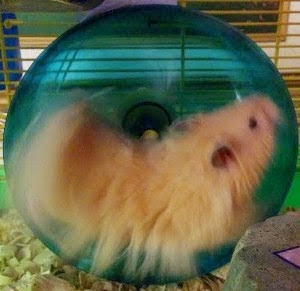 Today I released an open source project based on the idea used in the Kickstarter project: https://github.com/byronknoll/battle-map-explorer
Today I released an open source project based on the idea used in the Kickstarter project: https://github.com/byronknoll/battle-map-explorer
Friday, November 13, 2015
Battle Map Explorer
Unfortunately the Kickstarter project I created did not get funded. Here is what the funding graph looked like: Today I released an open source project based on the idea used in the Kickstarter project: https://github.com/byronknoll/battle-map-explorer
Today I released an open source project based on the idea used in the Kickstarter project: https://github.com/byronknoll/battle-map-explorer
 Today I released an open source project based on the idea used in the Kickstarter project: https://github.com/byronknoll/battle-map-explorer
Today I released an open source project based on the idea used in the Kickstarter project: https://github.com/byronknoll/battle-map-explorer
Wednesday, November 11, 2015
cmix v8
I have released a new version of cmix. I have also migrated the code from a private Bitbucket repository to a public GitHub repository: https://github.com/byronknoll/cmix.
Thursday, August 13, 2015
Kickstarter Project
 I just launched my first Kickstarter project! https://www.kickstarter.com/projects/411355421/battle-map-explorer
I just launched my first Kickstarter project! https://www.kickstarter.com/projects/411355421/battle-map-explorer
Saturday, April 25, 2015
Baka Analytics

I have a pet hamster named Baka. Baka spends most of his free time running on a hamster wheel. I put together a device to track the hamster wheel's rotation. It uses a Raspberry Pi 2, a magnetic sensor, and Google Analytics. Here is a webpage with live coverage of Baka's running: https://sites.google.com/site/bakaanalytics/. He tends to run about 6 kilometers per day (13,000 rotations) and sticks to a strict schedule of running between 10pm and 6am.
Sunday, March 01, 2015
Picavet
I have been attempting to do aerial photography with a GoPro. My first attempt was using a quadcopter (Parrot AR.Drone):

Unfortunately the GoPro was too heavy for the quadcopter and it kept crashing. I tried two types of mounts for the camera: one on top (pictured above) and one suspended underneath the quadcopter using string. Mounting on top was more stable, but the quadcopter still occasionally crashed so it was too risky to attempt flying high altitudes.
One of my coworkers told me about a way to mount a camera to a kite using a device called a Picavet. I constructed my own Picavet using two wooden rulers and some carabiners:

It works great!


Unfortunately the GoPro was too heavy for the quadcopter and it kept crashing. I tried two types of mounts for the camera: one on top (pictured above) and one suspended underneath the quadcopter using string. Mounting on top was more stable, but the quadcopter still occasionally crashed so it was too risky to attempt flying high altitudes.
One of my coworkers told me about a way to mount a camera to a kite using a device called a Picavet. I constructed my own Picavet using two wooden rulers and some carabiners:

It works great!

